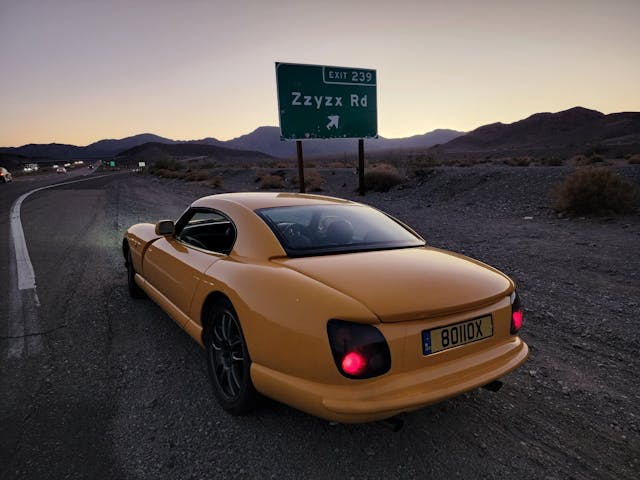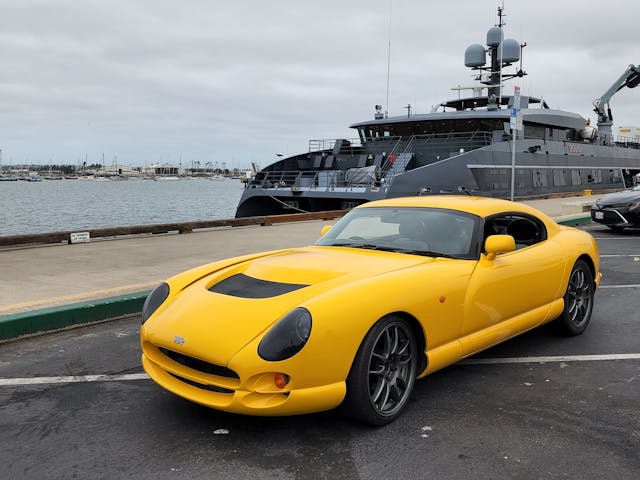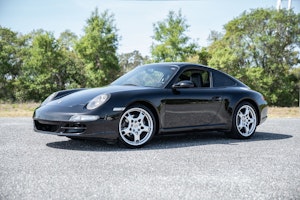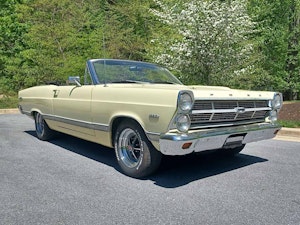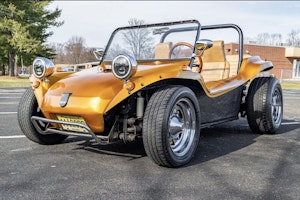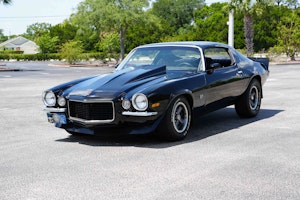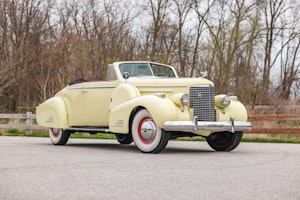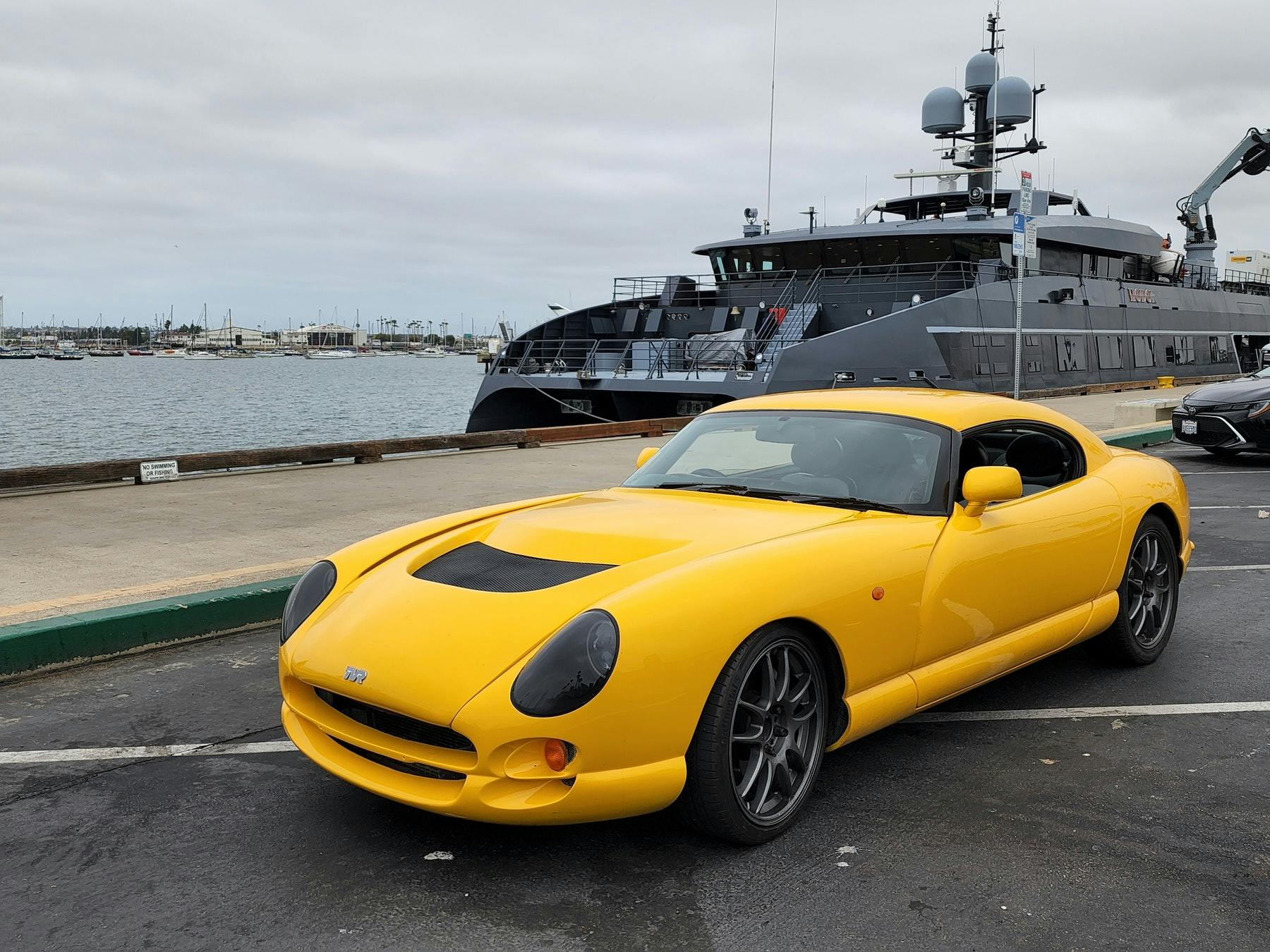Media | Articles
Its namesake guarded the underworld, but this TVR Cerbera is a ticket to paradise
If you are tired of seeing the same cars over and over again at your local cars and coffee, this 1996 TVR Cerbera on Hagerty Marketplace is for you. Aside from a few appearances in video games and on Top Gear, this era of TVR is fuzzy for many Americans, so here is a little history lesson.
Released on the heels of the Griffin and Chimaera, the Cerbera was the third car built by TVR under the leadership of Peter Wheeler and the first powered by a TVR engine built in-house. Up to that point, TVR purchased and tuned Rover V8s for its sports cars, but after BMW bought Rover, Wheeler wanted to avoid any future supply-chain issues if the engine were discontinued. It went to work designing a clean-sheet V-8 intended to power the Griffin and Chimaera, but production delays pushed it to be released in the Cerbera a few years later.
The result was the “Speed Eight,” a SOHC 16-valve 4.2-liter V-8 with a flat-plane crank and a highly uncommon V-angle of 75 degrees. As you can imagine, the Speed Eight sounds barbaric, but that’s fitting for a car named after Cerberus, the three-headed beast that guards the entrance to the Underworld. With 360 hp, the Speed Eight had one of the highest specific outputs of any naturally aspirated V-8 at the time with 83 hp/liter. By comparison, the C5 Corvette had 60 hp/liter.
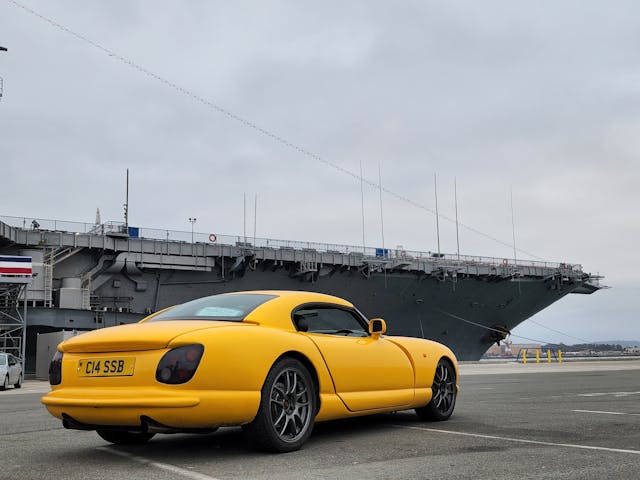
The very compact design of the Speed Eight allowed it to be mounted behind the front axle in the Cerbera while weighing only 267 pounds dry. This gave the Cerbera incredible balance and a low curb weight of 2245 pounds—only 100 pounds heavier than an NA Miata while having four seats—a TVR first. This makes the stellar 0-to-60 time of 4.2 seconds not too surprising.
A 420-hp, 4.5-liter version was eventually introduced, as well as a “Red Rose” option which increased output to 440 hp when run on 97 octane fuel with the help of a button on the dash that altered engine mapping. The “Red Rose” could sprint to 60 in 3.9 seconds with a top speed of 193 mph.
Marketplace
Buy and sell classics with confidence
TVR dropped the engine after the Cerbera ceased production. Future TVRs would be powered by the “Speed Six,” which made its debut in the Cerbera as a 350-hp, 4.0-liter slant-six with four valves per cylinder, twice as many as the Speed Eight.
The overpowered V-8 combined with a low curb weight and lack of traction control, ABS, and airbags gave the Cerbera a brutal reputation. Extremely sharp steering with only two turns lock to lock (2.4 turns in the Speed Six Cerberas) allowed for more experienced drivers to regain control when the over-powered and underweight Cerbera lost traction, which was not uncommon.
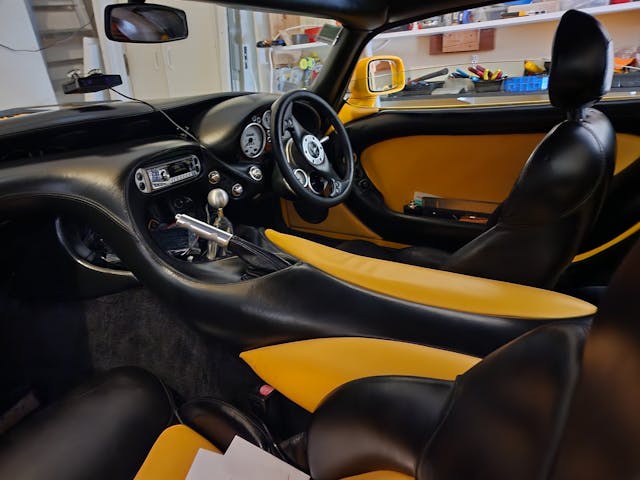
While you are holding on for your dear life, you’ll notice the steering wheel has only two spokes. This allows space for an additional gauge cluster under the steering column, complete with an HVAC vent solely to dry the driver’s hands after they regain control.
The Cerbera underwent a facelift in 2000 and gained the clustered headlights for which post-millennium TVRs are known. Like all TVRs, the Cerbera is a bit of an oddball. Most notably, there are no visible exterior door handles—the doors open via a button under the side mirror.

The Cerbera is an incredibly rare car. Between 1996 and 2006, fewer than 1500 were built by TVR. Due to the 25-year import rule, these just became legal to import last year but appear to be the favorite modern TVRs to import into the U.S.
The Rover V-8–powered TVR Griffith and Chimaera were both produced in greater numbers than the Cerbera and have been legal to import since 2017. Despite the advantage of the earlier TVRs, more Cerberas have been imported into the U.S. per eligible year. Popularity of the Cerbera in the United States is a good litmus test for when the even more outlandishly styled TVR Tuscan and Sagaris become legal in a few years.
Based on insurance and shipping records, the current owner imported this yellow 1996 TVR Cerbera from the U.K. on April 12, 2022 to its current location in San Diego. With only 26,600 miles, this TVR is likely the lowest mile example in the country—considering only six have been imported. The owner loves the Cerbera, having owned four while living in the U.S. and Europe. He claims the only reason he is selling this is to make room for other toys, but vows to get another one as soon as space frees up. Does your garage have space to shelter this eclectic beast? If so, call us envious.
